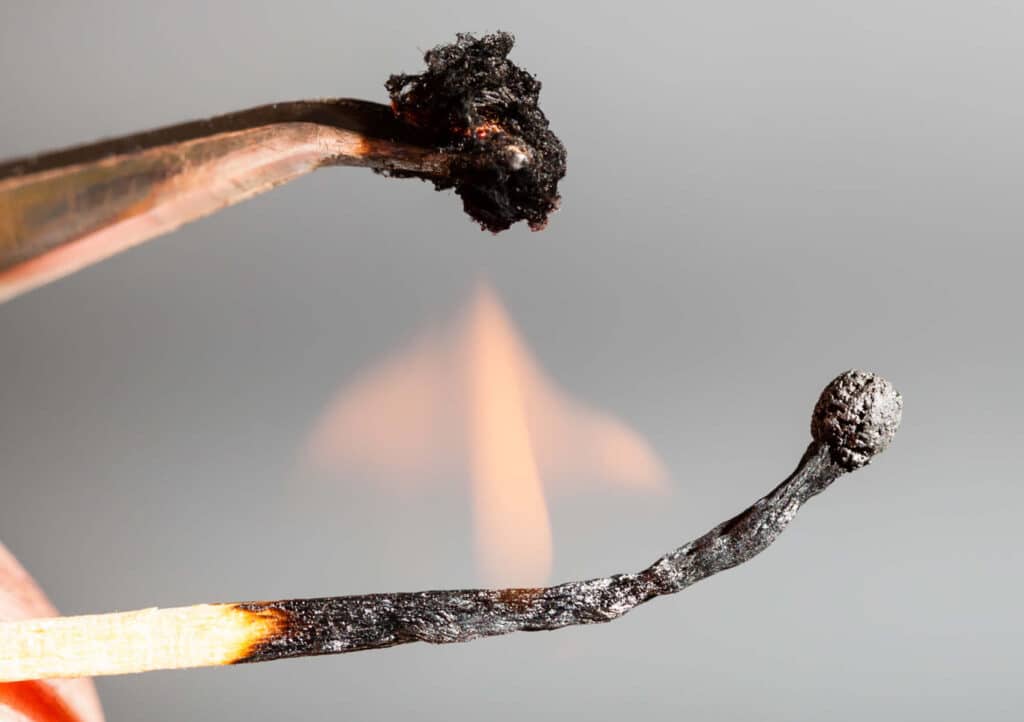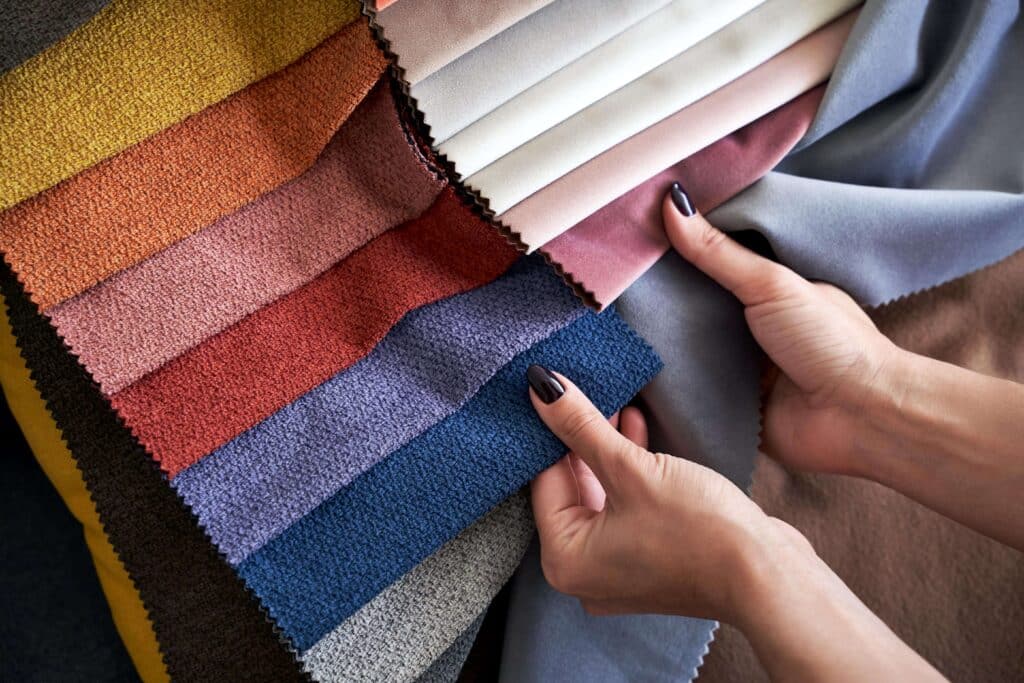How to Perform the Burn Test on Upholstery
The burn test involves taking a small sample of the fabric, holding it in a pair of tweezers or pliers, and igniting it and observing how it behaves during and after burning.
It’s important to note that a sample should be taken from an inconspicuous location such as inside the cushion where the zipper flap is floded over.
Prioritize safety by having appropriate fire safety measures in place before proceeding with the burn test. Additionally, if you’re inexperienced in this matter, it is highly advisable to seek the expertise of a professional to ensure both accurate and safe outcomes.

To start the burn test, follow these steps:
- Begin by taking a small piece of your upholstery fabric (around 2-3 inches is ideal), place it on a non-flammable surface and hold it with a pair of tweezers or pliers.
- Once you have the fabric sample, proceed to ignite it using a long match or lighter.
- Ensure you have a source of water nearby in case of any accidents.
What to observe when doing the burn test?
While your fabric is burning, pay close attention to the smell, the movement of the flame, and the appearance of the ashes once they’ve cooled down.Depending on the fabric each of these characteristics will be different, some of them are quite similar so you may have to repeat this process to make sure that the fabric you think is the right one.
Here is a list of the most common fabrics and their behaviour in the burn test:
Cotton
Cotton is a natural fiber widely used in upholstery and in so many other fabrics. While products often boast a “100% cotton” label, it’s prudent to ascertain its authenticity. Employing a swift burn test can reliably unveil whether your purchase aligns with your expectations.
When you burn cotton, it ignites easily and burns with a steady flame. The burning cotton will produce a clean, white ash and emit a smell similar to burning paper or leaves. If the ash feels light and powdery, it confirms the presence of cotton in the fabric.
Linen
Linen, another natural fabric, exhibits similar burning characteristics to cotton. It burns quickly and with a steady flame. The ash produced by burning linen will also be light and powdery. Linen has a distinctive smell reminiscent of burning grass or straw.
Silk
Silk is a delicate and luxurious fabric that requires special care. During the burn test, silk will burn slowly with a faint flame that self-extinguishes. The odor of burning silk is similar to burning hair or feathers. The ash produced by burning silk will be black, brittle, and easily crushable.

Wool
Wool, a popular upholstery material known for its durability and warmth, behaves differently during the burn test. When wool burns, it has a self-extinguishing property, meaning it will stop burning once the flame is removed. The smell of burning wool resembles that of burning hair, and the ash left behind will be black, charred, and crumbly.
Polyester
Polyester, a synthetic fabric widely used in upholstery, has distinct burning characteristics. It melts and shrinks away from the flame rather than burning. When it does catch fire, it burns with a dark, smoky flame. The odor of burning polyester can resemble that of a sweet, chemical smell. The ash left behind will be hard, dark, and sometimes black.
Nylon
Nylon, another common synthetic fabric, also melts and shrinks away from the flame rather than burning. If it does ignite, it burns with a steady flame, emitting a sweet, chemical odor. The ash produced will be hard, dark, and sometimes black, similar to polyester.
Why is Important to know the fabric of your Upholstery?
The burn test is a valuable tool for identifying the fabric composition of your upholstery. By carefully observing the burning characteristics, odor, and residue left behind, you can determine whether your upholstery contains natural fibers like cotton, linen, wool, or silk, or if it is made from synthetic materials such as polyester or nylon.
Understanding the fabric of your upholstery will also guide you on how to properly clean and maintain it for many years to come.

Should you be uncertain about the fabric of your upholstery and require expert assistance, you can always reach out to us. We will gladly provide our help!
Our professional upholstery cleaners often possess the ability to identify the fabric just by sight. However, certain fabrics can pose a challenge for even the trained eye to differentiate. In such instances, we will conduct a burn test at our upholstery and rug washing plant. After that, our upholstery cleaners we’ll move forward with the deep cleaning that your upholstery needs!
